🎣 Shore Jigging Must-Have Gear
Catch more kingfish, snapper, and trevally with the right gear:
✅ Zephyr Jig (30g) – Built for long casts and deep strikes
✅ Bom Dart 30g – Secure hooksets for soft plastics
✅ Slice Jigs – Deadly from shore for Bonito and Trevally
💥 Grab Your Jigs Today & Fish Smarter!
Fishing Sydney’s estuary systems offers a rewarding experience, especially for those who prefer land-based angling. Success in these waters requires the right gear, understanding of the environment, and effective fishing techniques. This guide provides essential tips for catching fish in shallow flats and mangrove edges, with a focus on areas like the Parramatta River.
Essential Gear for Land-Based Lure Fishing
When it comes to gear, simplicity and mobility are key for land-based fishing. A 2-4kg rod paired with 4lb braid and a 6-10lb fluorocarbon leader is ideal for targeting species like bream, whiting, and the occasional flathead or tailor in Sydney’s estuary systems. While a 10lb leader might seem heavy, it offers the confidence needed when fishing around rock oysters, snaggy rocks, and sharp-toothed predators like large flathead.
To stay light and mobile, ditch the bulky tackle box. Instead, carry a backpack with just the essentials: a selection of ReproBaits Vibe lures in various colors, soft plastics, a few jigheads, leader line, pliers, scissors, sunscreen, insect repellent, and water. This minimalist approach allows you to cover more ground and increases your chances of finding fish, rather than being anchored to a single spot.
Scouting and Understanding the Tides
One of the best strategies for successful land-based fishing is to use low tide as an opportunity to scout your fishing area. At low tide, observe where food sources like rock oysters, crabs, and shellfish are exposed. These are the spots fish will flock to once the tide rises. Identifying these areas helps you predict where the fish will be during different stages of the tide.
For example, in areas around Lilyfield, the mangroves dry out at low tide but are partially submerged at high tide. As the water rises, it brings fish into these areas to feed on the exposed food. Understanding these tidal patterns allows you to position yourself in the right spot at the right time, maximizing your chances of a successful catch.
Using tools like tide charts and live tidal height data can also give you a significant advantage. Knowing how the water will move and rise in specific areas helps you target fish more effectively, whether they are moving into shallows or retreating back to deeper waters.
Finding Fish: Tides and Wind
Fish behavior is closely tied to the movement of the tide. As the tide rises, fish move into shallower waters, following the food sources. First come the small baitfish, then the bream and whiting, with flathead lurking nearby, ready to ambush. By understanding these movements, you can predict where fish will be at any given time.
Wind direction is another crucial factor. Fish the side of the river or bay where the wind is blowing, as this is where plankton and baitfish will be pushed, drawing in larger fish. While casting into the wind might be challenging, it’s often more productive than casting with the wind into barren areas.
Effective Casting Angles and Proper Footwear
Maximizing your effectiveness requires casting parallel to the shore, especially near rock ledges. This approach keeps your lure in the strike zone longer, increasing the chances of a hookup. While staying dry is preferable, sometimes wading into the water for a better casting angle is worth the effort. Just be sure to wear proper wading shoes to protect your feet from sharp rocks and hidden stingrays.
When wading, always consider how you’ll land and unhook the fish. If you’re in the water, a belt with a rod holder can be invaluable, freeing up both hands for handling fish safely.
Selecting the Right Lures and Retrieval Techniques
For land-based fishing in shallow flats, surface lures and shallow diving crankbaits like the ReproBaits Vibe are excellent choices. Surface lures are particularly effective for whiting, especially when using a constant walk-the-dog retrieve. Shallow diving crankbaits, on the other hand, are ideal for bream. These lures dive down to about a meter and work along the bottom before slowly floating back up when paused, making them perfect for fishing around snaggy areas.
The ReproBaits Vibe, with its natural vibration, attracts a wide variety of fish, including flathead, bream, and trevally. By adjusting the retrieve speed and incorporating occasional pauses, you can trigger strikes from both aggressive and cautious fish. Avoid aggressive rod sweeps, which can make the lure behave unnaturally. Instead, focus on a slow, steady retrieve that keeps the lure in the strike zone.
Understanding Hazards and Safety Tips
Fishing in Sydney’s estuary systems can be hazardous if you’re not careful. Slippery rocks and sharp oyster beds pose significant risks, so always wear shoes with good grip and tread carefully. Stingrays, often buried just beneath the sand, can also be a threat. To avoid stepping on them, shuffle your feet in outward circles as you walk through shallow water.
When navigating through mangroves, be mindful of spider webs strung between trees. Use your rod to clear the way ahead of you to avoid unwanted encounters.
Give Land Based Sydney Fishing a Go
Land-based lure fishing in Sydney Harbour particularly around shallow flats and mangrove edges, requires a mix of preparation, mobility, and the right gear. By scouting at low tide, understanding the impact of tides and wind on fish behavior, and using effective lures like the ReproBaits Vibe, you can significantly increase your chances of success. Stay safe, stay mobile, and enjoy the rewarding experience of landing fish from Sydney’s rich estuary systems.
🔔 Get the Best Soft Plastics for Bream & Flathead!
Shop our most popular soft plastics today:
✅ Bottom Bug – Realistic Crayfish Lure
✅ Squideez Soft Plastic – Perfect for finesse estuary fishing
✅ Bullet Prawn – Irresistible prawn action for flathead
📦 Fast Aussie Shipping – Order Now!

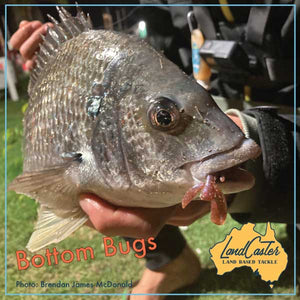
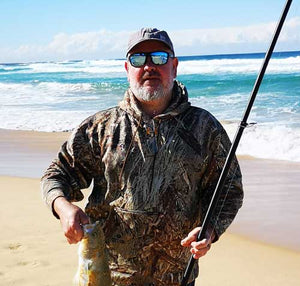
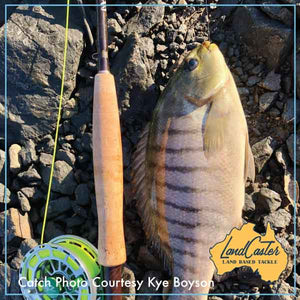
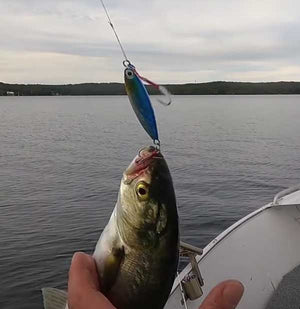
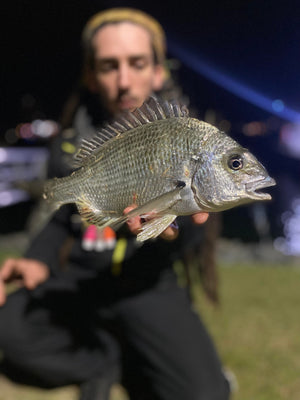

Leave a comment